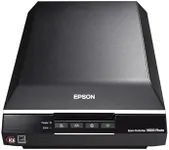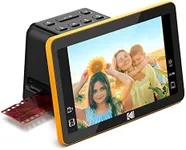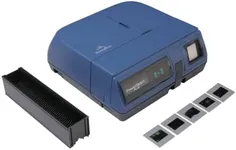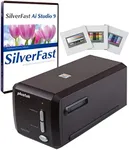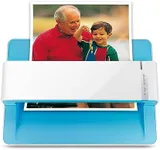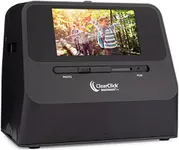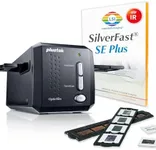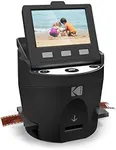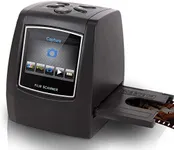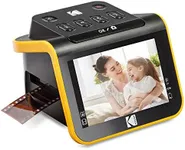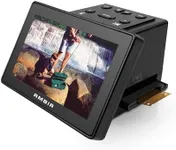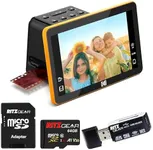Buying Guide for the Best Slide Scanners
When choosing a slide scanner, it's important to consider your specific needs and how you plan to use the device. Slide scanners are used to digitize slides, negatives, and sometimes even film, converting them into digital images that can be stored, edited, and shared easily. The right slide scanner for you will depend on factors such as the quality of the scans you need, the volume of slides you plan to digitize, and any additional features that might be important for your workflow. Here are some key specifications to consider when selecting a slide scanner.ResolutionResolution is measured in dots per inch (DPI) and determines the level of detail the scanner can capture. Higher resolution means more detail and larger file sizes. For general use, a resolution of 2400 DPI is usually sufficient. If you need high-quality scans for professional use or large prints, look for a scanner with 4000 DPI or higher. Consider your end use: if you plan to print large photos or need detailed images for professional purposes, opt for higher resolution. For casual use or online sharing, a lower resolution will suffice.
Color DepthColor depth, measured in bits, indicates how many colors the scanner can capture. Higher color depth means more accurate and vibrant colors. Most slide scanners offer 24-bit color depth, which is adequate for general use. For professional or archival purposes, look for scanners with 48-bit color depth to ensure the best color accuracy and detail. If you need precise color reproduction for editing or printing, higher color depth is essential. For everyday use, 24-bit should be enough.
Dynamic RangeDynamic range, often measured as Dmax, indicates the scanner's ability to capture details in both the darkest and lightest areas of the slide. A higher dynamic range means better detail in shadows and highlights. For general use, a Dmax of 3.0 is usually sufficient. For professional or archival purposes, look for a scanner with a Dmax of 4.0 or higher. If you need to capture a wide range of tones and details, especially in high-contrast images, a higher dynamic range is important.
Scanning SpeedScanning speed refers to how quickly the scanner can digitize a slide. Faster scanning speeds are beneficial if you have a large number of slides to digitize. Scanning speed can vary widely, with some scanners taking just a few seconds per slide and others taking a minute or more. If you have a large collection of slides, a faster scanner will save you time. For occasional use, scanning speed may be less critical.
CompatibilityCompatibility refers to the scanner's ability to work with your computer's operating system and software. Ensure the scanner is compatible with your current setup, whether you use Windows, macOS, or another operating system. Additionally, check if the scanner comes with software that meets your needs for editing and organizing your scanned images. If you use specific photo editing software, make sure the scanner's output files are compatible with it.
Additional FeaturesAdditional features can enhance the functionality and convenience of a slide scanner. These may include automatic dust and scratch removal, batch scanning capabilities, and built-in editing tools. Consider what features are important to you based on your workflow. For example, if you have many slides to scan, batch scanning can save time. If you want to minimize post-processing, look for scanners with dust and scratch removal features.
